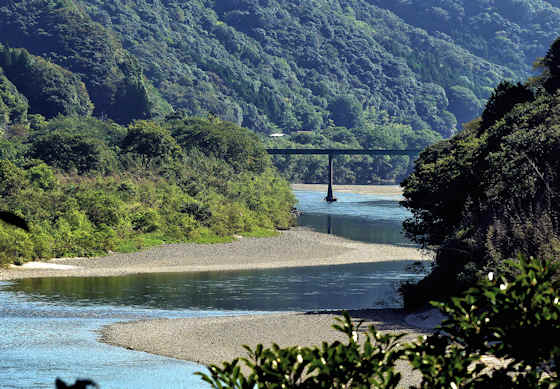Sunday, November 12, 2023
Former Obama Railway
Saturday, November 11, 2023
Along the River to Tazu
Friday, November 10, 2023
Across & Over Shimabara Peninsula Day 62 Kyushu Pilgrimage
A Walk Around Kyushu
Day 62 Shimabara to Obama
Thursday February 20th 2014
I'm up early to another fine day with clear blue skies, though the peak of Mount Unzen is draped with a cap of clouds clinging to the snow on the peak. I will be passing over that range today so I set off early. First I head a little south to the UnzenDisaster Memorial Museum that commemorates the most recent eruption of Unzen back in 1996. I had been here before, and it is way too early for it to be open, but near the museum proper is another site that I had missed before. Many of the houses that were buried underthe mudslide are on display, some outdoors, some in a covered building. They actually look very weird because they have no damage, they are just buried with roofs and telegraph poles sticking out. Apparently, the mudflow, formed out of a mixture of ash and the extra runoff from heavy rains falling on the fresh lava, was only moving at a slow rate by the time it got here to the coast so people were able to evacuate slowly and safely, and the force of the flow was not strong enough to demolish the houses, just engulf them. All a bit surreal.
It turns out that the western slope of Unzen is much steeper than the eastern. There is no gentler slope as it gets further down, it is switchbacks all the way. I soon catch glimpses of Tachibana Bay through the trees, and there is less traffic on this side, so its a very pleasant walk. About three quarters of the way down I pass through a small settlement, the first since leaving the top. Some of the residents are out playing gateball, a Japanese variation on croquet and very popular with retirees.
A little further and I come to something quite unexpected and not marked on my map, some sort of a miniature religious theme park with the name Inori no Sato. There are no religious buildings, just a small tea room, but scattered around the grounds is a veritable who's who of popular Japanese deities. There are large statues of the Seven Lucky Gods, an Amida Buddha, several Kannon, a dragon holding a giant golden sphere, a Fudo MyoO, a kappa, a giant red Tengu mask, a small Inari shrine, and several others.
Thursday, November 9, 2023
Weeping Cherry of Senjuin Temple
Wednesday, November 8, 2023
Obama Onsen Snapshots
Obama Onsen is a small. coastal hot spring resort on the West coast of the Shimabara Peninsula in Nagasaki, Kyushu.
Tuesday, November 7, 2023
Anrakuji Temple Mima
Monday, November 6, 2023
Obama Shrine & its Komainu
































































